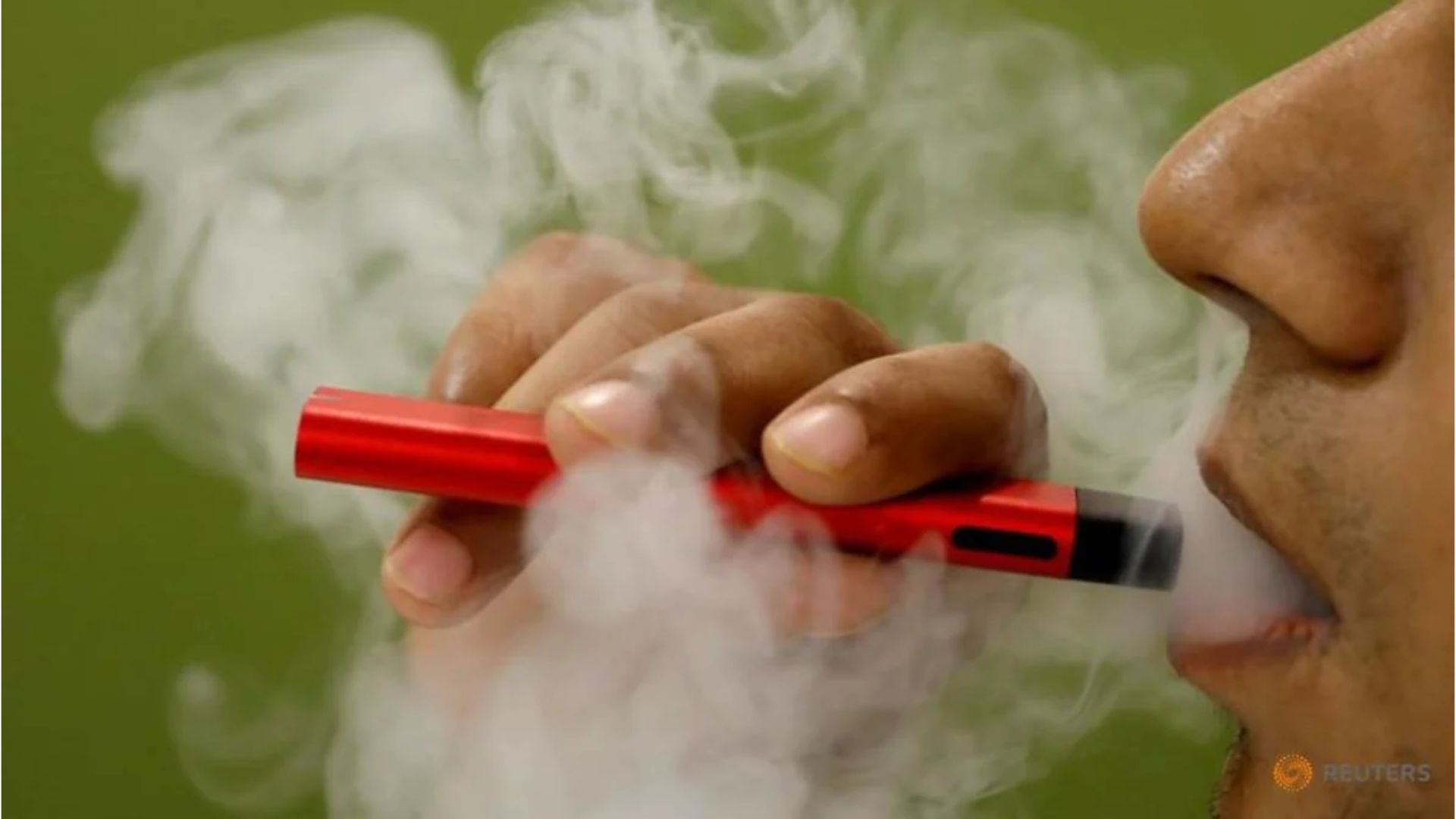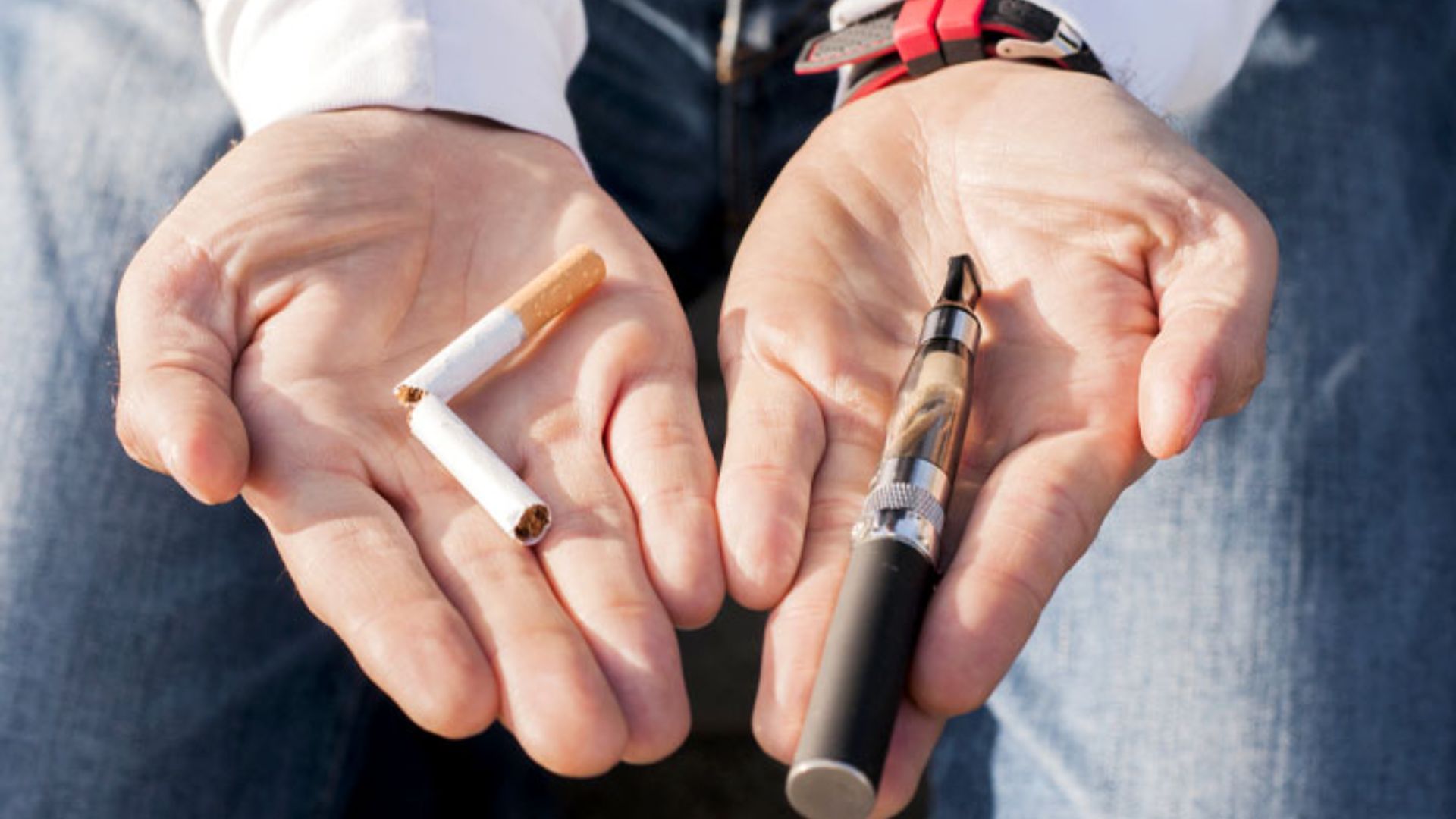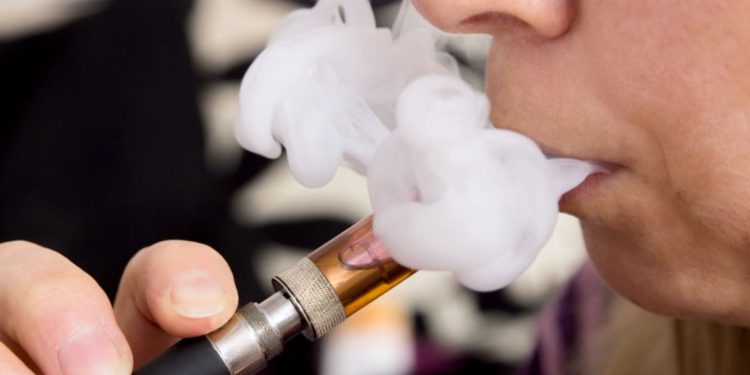Young people in Singapore, who no longer see smoking as glamorous or who are aware of its harm, are attracted to yet another form of smoking: vaping using e-cigarettes.
Just walk into any place with a teeming nightlife and you will find groups of young Singaporeans with an e-cigarette stuck to pursed lips.
Despite the ban here, they are still able to obtain them, resulting in the significant rise in the number of e-cigarette cases handled by the Health Sciences Authority (HSA) – from 1,565 cases in 2017 to 7,593 last year.
The number of people caught using and possessing e-cigarettes went up to 4,697 people in 2021, up from 1,266 in 2020.
They believe that they are far less harmful than cigarettes and can help them quit for good but these electronic devices heat up a vapour solution and send it into the lungs much like a regular cigarette.
On the contrary, a pair of 2019 studies have shown that e-cigarettes are just as dangerous – possibly even more dangerous – than traditional cigarettes. The first study found that vaping can worsen several heart disease risk factors at levels equal to tobacco cigarettes, while the second found that e-cigarettes decrease blood flow in the heart even more than tobacco cigarettes.
Vaping causes “popcorn lung”: A myth or reality?
The harms of e-cigarettes are difficult to assess, partly because there is so much variation between different e-cigarettes and the e-liquids they contain. As these products are newly developed, fair conclusions about their long-term health impact cannot be made, said Assistant Professor at the NUS Saw Swee Hock School of Public Health Yvette Van Der Eijk. This is also a challenge because most diseases linked to smoking have a late onset – some 40 over years after the person starts smoking.

This teen vaping craze, which took off from a popular e-cigarette brand with flavoured nicotine liquids such as crème brulee and watermelon, have also triggered a mysterious lung disease called “popcorn lung”.
“Popcorn lung” is the nickname for a condition that damages the smallest airways in the lungs resulting in coughing and shortness of breath. It is sometimes caused by breathing in a chemical used in flavoured nicotine or to microwave popcorn.
Speaking to TheHomeGround Asia, an Associate Consultant from the Department of Respiratory and Critical Care Medicine at the Singapore General Hospital (SGH) Ken Lee says the name “popcorn lung” came about because the disease was originally discovered among workers in a popcorn manufacturing factory, who inhaled a flavouring chemical diacetyl used in the popcorn making process. It was subsequently found to be the cause of their disease.
“The small airways of the lungs are inflamed, damaged and scarred as a result of inhalation of toxic substances, or sometimes due to infections. Diacetyl has been found in some e-cigarettes. There are other compounds present that could also trigger the same process causing this disease,” he says.
Diacetyl is a widely used chemical in food and beverage flavourings and the principal types of flavourings that use diacetyl are dairy flavours, particularly butter cheese, milk, and yoghurt flavouring. Diacetyl is also in the so-called brown flavours such as caramel, butterscotch, and coffee.
Dr Philip Eng, a senior consultant respiratory physician who has his own clinic – the Philip Eng Respiratory & Medical Clinic at the Mount Elizabeth Medical Centre, cited the example of a Canadian teen who turned up in the emergency department with a severe cough.
He was diagnosed with pneumonia and prescribed antibiotics but five days later, his symptoms worsened and was admitted and given intravenous antibiotics. He continued to decline and was put on a mechanical ventilator, but still failed to improve.
“His was the first before the US outbreak had been reported. Though they share similarities, the injuries were different. Instead of damaged air sacs in the lungs, the teen suffered damaged airways, which his doctors believe were caused by chemicals,” Dr Eng says.
Dr Lee adds, “Once diagnosed, it is important to avoid further exposure to chemicals, including vaping and smoking, that could otherwise cause further damage to the airways. Without treatment, patients may get more breathless and die from worsening respiratory failure.”
Ban in Singapore to prevent similar cases
It was four years before the Canadian case that Singapore banned emerging tobacco products like e-cigarettes, smokeless cigars and cigarillos in a pre-emptive measure to protect public health.
The Health Ministry said in 2015 that the ban is to ensure that they do not gain a foothold or become entrenched in the Singapore market and in 2017, the ban was extended to cover purchase, use and possession.
Speaking at a Health Promotion Board (HPB) roadshow, then Senior Parliamentary Secretary for Health and Home Affairs Amrin Amin said there is no data on the long term health effects of using e-cigarettes as these are relatively new products.

“So our advice is don’t take chances. Be familiar with the facts, don’t be seduced by half-truths or lies! It’s your health we are talking about. E-cigarettes are not harmless,” he said.
Hence, Senior Minister of State for Health Koh Poh Koon said in Parliament at the start of this year that the authorities will do more to enforce the current ban on the sale and possession of e-cigarettes and vaporisers here while continuing to review the tobacco tax rate.
Singapore is also open to studying New Zealand’s cohort ban on smoking, and will look at how it implements the ban, its effectiveness, and how its experience could be applicable here.
But Dr Koh noted that the young people here are generally not smokers. Instead the challenge is stopping vaping products like e-cigarettes from becoming popular, adding that despite the outright ban, e-cigarettes have found their way here through e-commerce.
There are still people openly selling them through vape chat groups and a CNA report revealed at least 10 such groups in Singapore on Telegram. The one rule among the groups seems to be restricting the sale to those 18 and above – and such channels are on the authorities’ radars.
The truth about vaping and cigarette smoking
E-cigarette use, or vaping, has become remarkably popular in recent years. There is no data of how many Singaporeans are vaping but according to Gallup, about 6 per cent of adults in the US now report vaping. That’s about 15 million people, double the number from just three years ago.
Despite claims that vaping is less harmful than smoking cigarettes, it has its risks as well.
Dr Lee says e-cigarettes are marketed as smoke-free alternatives to help smokers quit smoking, but studies suggest vaping is almost as dangerous as smoking.
“Studies have also shown that among the users of e-cigarettes, there are many young people, including those who have never smoked previously. These people experiment vaping with the misconception that it is safer and healthier than traditional cigarettes. The nicotine content, as well as flavourings in e-cigarettes reinforce addiction, especially among adolescents and young adults,” he says.

Although there are no absolute numbers, a large number of teens are reported vaping, despite the nationwide ban against selling e-cigarette products. Its popularity is partly related to the marketing of flavours known to appeal to minors, such as bubblegum and berry-flavoured products.
“Vaping causes irritation to the airways and inflammation in the lungs. These may cause symptoms such as sore throat, increased cough or chest discomfort. If the lung inflammation and injury is severe, it may lead to respiratory failure and death,” Dr Lee says.
“Those with underlying lung conditions such as asthma, or who are recovering from Covid-19 pneumonia, are more vulnerable to effects of vaping because it can exacerbate the underlying lung condition and lead to worsening lung function,” he adds.
And as for whether vaping can stop someone from smoking cigarettes in the long run, Dr Eng says, “Even the Chinese pharmacist Hon Lik who invented e-cigarettes in 2003 to help people quit smoking didn’t work for him. Instead of switching completely, he is now a dual user, vaping and smoking at the same time.”
From Hon Lik’s experience, you would expect from the strong and consistent epidemiological evidence that e-cigarettes keep people smoking cigarettes.
Join the conversations on TheHomeGround Asia’s Facebook and Instagram, and get the latest updates via Telegram.












